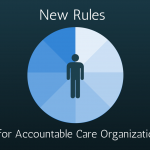
Managed Care – Not New but our Healthcare Perspective Might Be
Managed care has been around for almost one hundred years, at least in theory. When placed up against fee-for-service payment models, however, it was a hard sell. Traditionally, the way that physicians were compensated for their services was a fairly straight-forward invoicing process: they would bill the patient (or later, the payer) for everything they did in terms of diagnosing or treating the patient. Everything.









